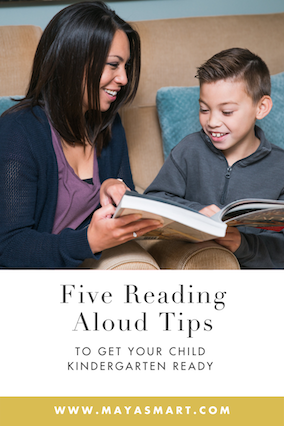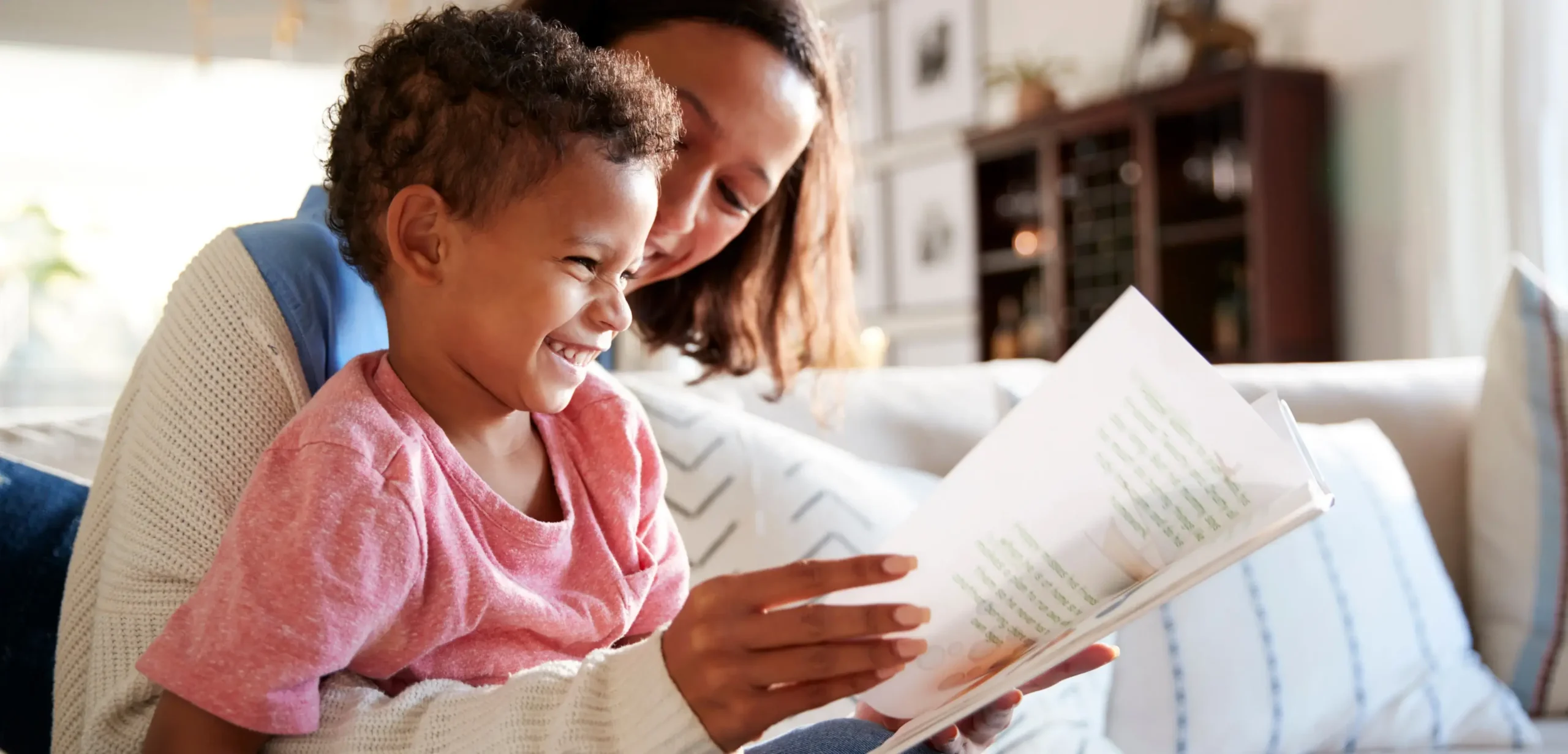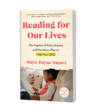The idea of reading to children daily is deeply entrenched in American culture, even if the practice hasn’t completely taken hold. Books advising parents on creating family reading routines, and recommending what to read to kids when, have flourished since the 1930s.
Raise-a-reader stories are standard features of parenting magazines and blogs. Schools, teachers, and community organizations all tout the benefits of reading to kids. My local grocery store chain even runs a book drive and encourages parents to pledge to read to their children several times a week.
But there’s much less discussion of what exactly to do during storytime—beyond turning the pages, reading with feeling, and keeping things fun. The link often remains unclear between the printed words on the page, a parent’s spoken recitation of them, and the child’s path to literacy.
In fact, experts say that, typically, parents focus on the story and illustrations when reading aloud to their children. That’s understandable! But what parents may not realize is that they’re missing a key teaching opportunity if they don’t also focus on the text itself. Otherwise, small children more often than not imagine that we’re deriving the story we’re reading aloud (down to its specific wording) from the engaging pictures—not those unfamiliar squiggles next to the pictures.
When reading to our kids, we tend to do little to raise their awareness of how books work, how print conveys meaning, and what letters and words really are. These are vital lessons, because before a child can read print, they must notice it.
Fortunately, it takes just a small course correction to maximize story time and help little ones bridge from listening into literacy. Parents or caregivers have thousands of opportunities to give mini-lessons on print concepts during storybook reading. It’s just a question of knowing what to point out to help forge a conscious connection between what they’re hearing and what you’re reading.
Note the emphasis here is on “mini.” Just sprinkle in a few comments (max), before or during reading, to direct your little one’s attention to how books are organized and how print mirrors spoken language. And be sure to use your finger to point to letters and words, which helps kids connect print and speech.
Here are five things to call attention to when reading with your child, along with proven talking points, derived from research into how to boost young kids’ literacy skills.
Book Cover Elements
Before you dive into a book with your child, get in the habit of taking a few moments to consider the cover together. Draw their attention to the title and author or illustrator names. Just point to the appropriate cover elements while describing what the words say and how they relate to the book.
Sample Phrases:
- The person who wrote the book is called the author. These words are the author’s name. (Point to the author’s name.) It says Vashti Harrison.
- This is the name of the book. It says Little Leaders: Bold Women in Black History. What is the name of the book?
- Look at the words here on the book’s cover.
Book Organization
It’s obvious to us as adults who are skilled readers, but the notion that books are read in a particular order, from front to back, is something that kids must learn. Similarly, they must come to understand that in English we read from the top of the page to the bottom and from left to right. Little ones may recognize these print features eventually without you directly mentioning them, but quickly pointing out page order, page organization, and print direction will get them there faster.
Sample Phrases:
- These are the words on the page. I need to read them this way. (Trace finger from left to right below the text.)
- Where should we start reading? Here? (Point to the first word on the page.) Or here? (Point to the last word on the page.)
- I know this is the top of the page. Show me where the bottom of the page is.
Print Meaning
Books are a handy tool for teaching an abstract concept—that the lines and curves kids see printed on paper, on products, and on signs actually mean something. Children don’t initially know that printed symbols (letters and words) represent spoken sounds and words, and that making sense of those symbols is what we call reading. Parents can use their words and finger pointing to help kids make the connection between written language and spoken language.
Sample Phrases:
- This is where the bunny is talking. The bunny’s words are inside this bubble. (Point to speech bubble.)
- Oh, my. Look at this word! This word is shouting. Look at the shapes of the letters. They are big and wide and red. They look like they are shouting, don’t they? This word looks like what it means, doesn’t it? It says shouting. What is this word?
- Show me where the bunny is talking.
Letters
Books typically feature uppercase and lowercase versions of letters, as well as different fonts. This provides opportunities to teach the names of a letter while pointing to diverse images of it, so that kids can begin to connect the letter name, shape, and sound as different representations of the same letter. And books also illustrate the point that letters make up words, helping kids bridge into reading.
Sample Phrases:
- This is an uppercase letter. Can you trace it with your finger?
- This is the letter B. (Point to the letter.) It makes the /b/ sound. We see this letter in lots of words. We see B in the word babysitter and in the word boy. Let’s point to all of the B’s on this page.
- The letters D,O, and G make up the word dog. (Point to each letter in turn.)
Words
Learning to recognize words in print is another skill that’s years in the making. Kids have to learn that letters are different from words (although some words have just one letter). They have to grasp that words have spaces between them in writing and that they carry meaning. And that’s just what it takes to become aware of words as a general concept or category of print. They still have to do the hard work of learning to recognize particular words (starting with their own name, high-frequency words, or high-utility words). Books give parents a convenient way to gently call attention to these concepts again and again.
Sample Phrases:
- This is the word Mommy right here. What is this word?
- Look at these two words. Which word do you think is a short word—this word? (Point to my.) Or this word? (Point to teacher).
- This page has four words on it, I will smile anyway! Let’s count the words while I point.
Remember, light and easy is the way to teach all these concepts. Keep the shared book reading experience fun by continuing to center the story and enjoy the illustrations. Reference print lightly but regularly, with just a few comments, questions, or directions in each book you share with your little one.
Resources for Parents
Pin me for reference:



